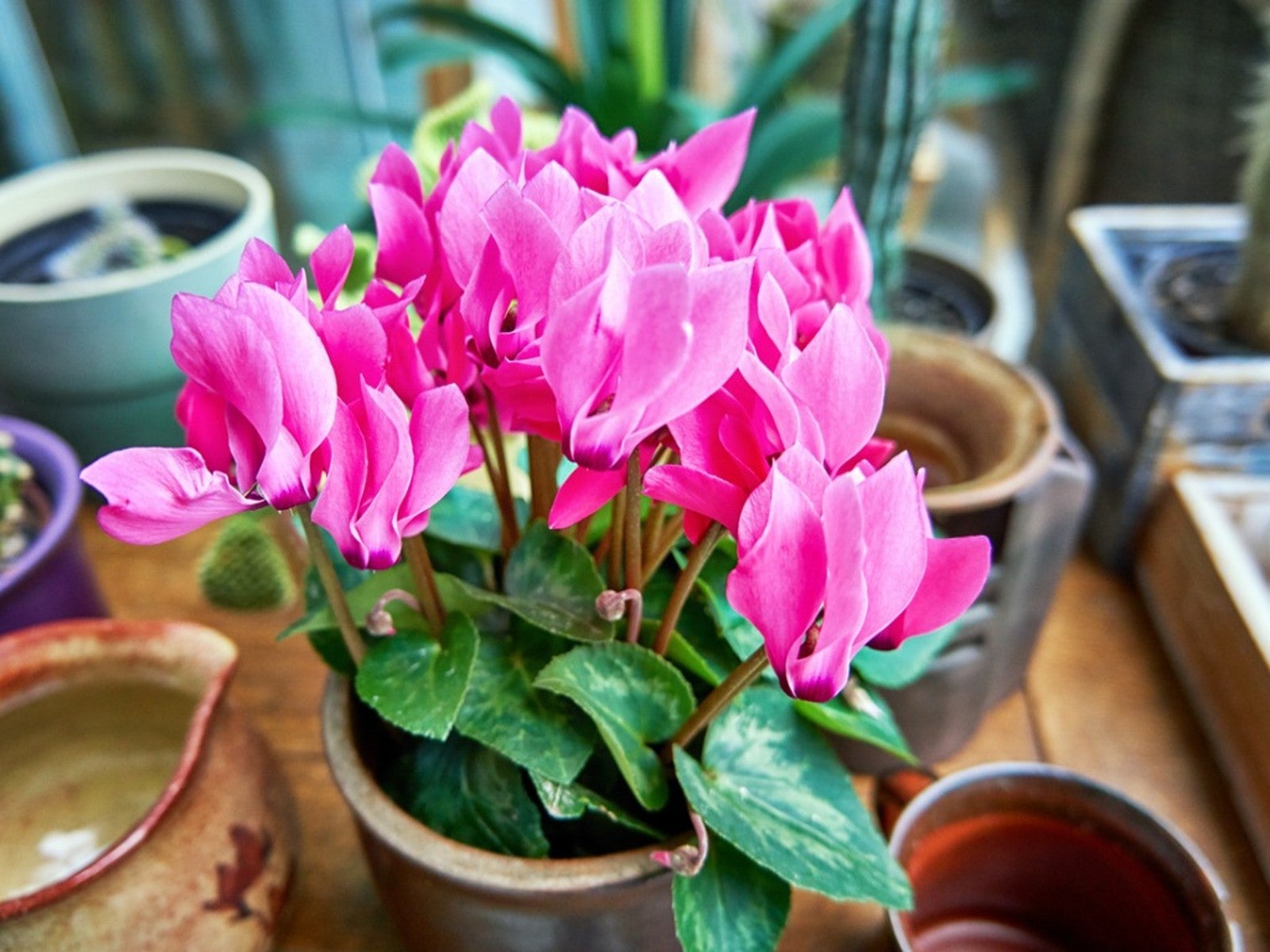
Growing plants indoors serves many purposes; they bring the outdoors in, act as décor, and may even clean the air we breathe. Incorporating plants need not be boring, as there are plenty of houseplants with flowers that bloom. Growing flowering houseplants can ease some of the winter blues, adding color and lovely scents to the home, and they last significantly longer than cut blooms. As long as you select the correct plants and learn about indoor flowering plant care, growing flowers indoors is easy.
10 Houseplants that Bloom
While there are many houseplants that bloom, we’ve compiled a list of 10 for growing flowers indoors. Of course, the key to growing flowering houseplants is proper indoor flowering plant care. Along with our list we’ve included a brief summary regarding indoor flowering plant care for each houseplant that flowers.
- African Violet: Arguably one of the most commonly grown houseplants with flowers is the African violet. This old time favorite is simple to grow as long as you provide it with ample humidity, bright but indirect light, and fertilize with a food made specifically for African violets.
- Anthurium: Anthurium is another houseplant sporting long lasting flowers offset by the dark green, arrow-shaped leaves. Anthurium is a medium light houseplant that blooms white, red, pink, or rarely orange during active periods. Keep soil moist and fertilize this houseplant with flowers in the spring and summer.
- Orchids: Orchids have grown in popularity thanks in part to easy care Phalaenopsis. This variety of orchid boasts blooms that can last for months, and does well in bright light. Take care not to let it sit in water or dry out completely. Fertilize during active periods of growth in the late winter to early fall.
- Kalanchoes: Kalanchoes are succulents that thrive in the dry air of most homes. The blooms come in an array of cheerful hues and bloom over for a lengthy period. Do not overwater and fertilize every two to three weeks while blooming.
- Chrysanthemums: Chrysanthemums are popular gift plants that thrive both indoors and out. Available in an array of colors, mums can last several weeks up to a month with proper indoor flowering plant care. Mums respond to short day/long nights to bloom so keep plants away from bright light until the buds open. Keep the plant moist but not sitting in water with nighttime temps of 60 to 65 degrees F. (16-18 C.).
- Cyclamen: Cyclamen is another commonly given flowering gift. Cyclamen needs cool temps of 50 to 60 degrees F. (10-16 C.), especially at night. Cyclamen needs bright sunlight in the winter with bright but indirect light the rest of the year. Keep soil consistently moist but not standing in water. A perennial, cyclamen will re-bloom. After flowering, quit watering the plant until the foliage dies. Allow to rest for six to eight weeks and then begin watering gradually.
- Primrose: Primroses are cheerful, colorful, flowering plants suited for both and indoor and outdoor growing. They require bright light in a cool room not over 60 degrees F. (16 C.). Keep consistently moist in an area of high humidity. Primroses are considered short term houseplants as they do not re-bloom easily. Remove spent flowers and leaves as needed to keep the plant looking nice.
- Hydrangea: When growing flowing houseplants like hydrangeas, pay attention to three things— bright light, cool temps, and plenty of consistent water. To get hydrangeas to re-bloom, cut the shoots back after flowering so two nodes or pairs of leaves are left. Repot in equal parts soil and peat moss. Place in a sunny southern exposure window until late spring, and then transfer outside to an area of morning sun only. Water regularly and fertilize with a complete liquid fertilizer every two weeks until fall and then bring the plant back indoors.
- Poinsettia: Poinsettias are one of the most common holiday houseplants that bloom. Difficult to get to re-bloom, poinsettias are generally kept as short term houseplants. Keep poinsettias consistently moist but not drenched, out of drafts and overt heat, and in temps 65 to 70 degrees F. (18-21 C.). If the plant is allowed to dry out, its leaves will drop.
- Spring flowering bulbs: Spring flowering bulbs make great indoor blooming houseplants. Try forcing tulip, hyacinth, daffodil, and crocus. Do not put in full sun and keep the plants in a cool area of around 60 degrees F. (16 C.) to extend the bloom time. Keep moist. When done blooming, move bulbs outside into the garden to flower next spring. When done blooming indoors, move the plant to a sunny area and keep moist enough for the leaves to mature and dry gradually. When the foliage dies, remove the leaves and soil from the bulb and store in a dry area. Plant outside in the fall.
When growing houseplants with flowers indoors, be sure to pay attention to the amount of water needed, sun exposure recommended, fertilizer if needed, temperature, and humidity requirements to ensure you maintain your lovely indoor houseplants with blooms that last as long as possible.
Sign up for the Gardening Know How newsletter today and receive a free copy of our e-book "How to Grow Delicious Tomatoes".

Amy Grant has been gardening for 30 years and writing for 15. A professional chef and caterer, Amy's area of expertise is culinary gardening.
